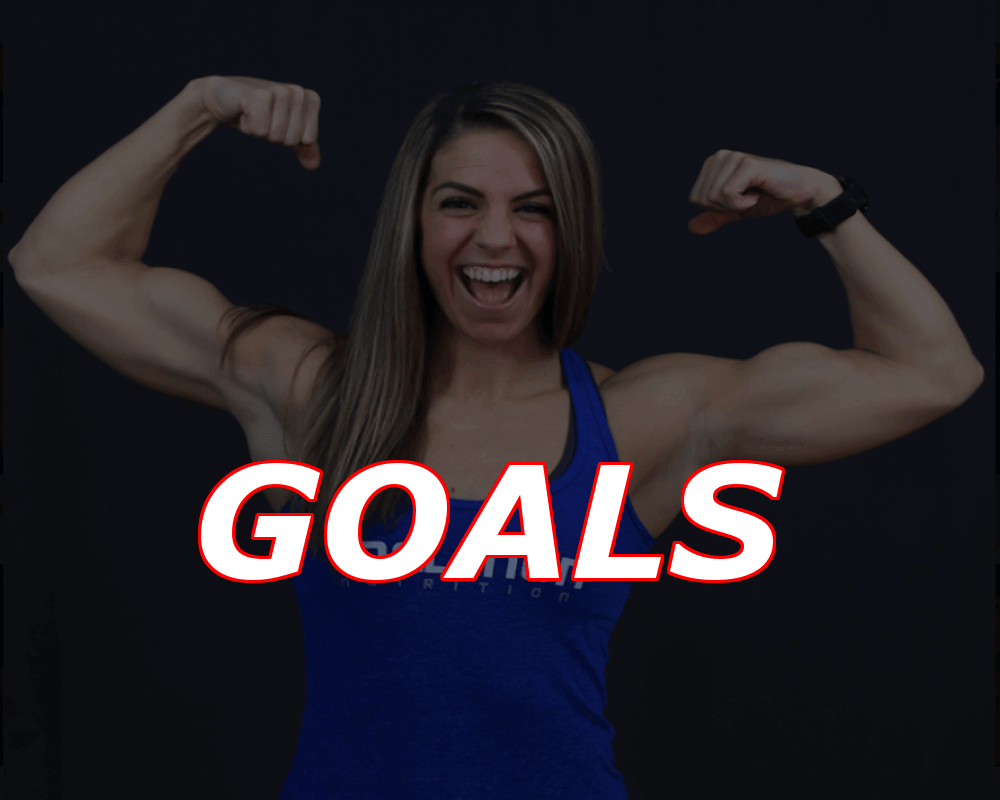"So what’s the goal?” It’s a common question we ask here at the shop. A question so simple but drowned in imagery. Most customers picture their favorite Instagram sensation while some go in the way of choosing a favorite bodybuilder. Without fail, however, 99% of customers mention wanting to lose fat and gain muscle. We all do. Aesthetically pleasing goals are nothing new. Many of us have looked at our favorite celebrities, athletes, or even superheroes from a young age and wished to look like them. The issue with these goals are that they aren’t tangible. I want abs sounds nice but the goal really isn’t to get abs, it’s to lose enough body fat that the abs are visible. Your goal may not really be your goal, just the byproduct of achieving your real goal. Make sense?
One of the easiest ways to find out what your real goal is starts with reverse engineering the end result you’re looking for. We’ll go back to the abs. Your goal is to get abs. Vascularity and muscle visibility is a result of having low body fat. So we need to lower our body fat while maintaining muscle mass. We go in a caloric deficit while maintaining our protein intake. We slowly decrease our calories each week while monitoring our performance. Our performance indicators have to do with our foundation lifts, squat, bench, and deadlift. We keep lifting heavy while implementing cardio throughout the week. If our foundation lift numbers are remaining intact, we’re on the right track. So how’d we get abs? Well we didn’t do a 1000 crunches a day or follow a 6 week ab annihilator. We kept track of our weight, body fat percentage, and gym lifts, all tangible numbers. We monitored the numbers and what they were telling us while adjusting based on those facts.
Have specific goals when diving into your next fitness endeavor. For those that are into fitness for the health and longevity aspect, perhaps getting your blood work done and finding different problem areas to work on would be a good goal. Something like eating healthier is too broad. Instead of skipping breakfast every morning, make breakfast three times a week, then four times a week, and then eventually the whole week. These goals, no matter how simple, are black and white, you either do them or you don’t. You can convince yourself that eating that one salad over the burger was eating healthier, skipping breakfast when you said you wouldn’t is harder to rationalize. The mini goals are better than cold turkey because their survival rate is higher. Don’t do too much at once.
Those that are in fitness for aesthetic or performance purposes tend to have loftier dreams, a lot of the same principles apply to both scenarios however. Mini goals are just as important because looking like Arnold or performing like Thor doesn’t happen overnight. Depending on how big you’re dreaming, your long term goals might take 5-10 years to reach with a lot of smaller goals along the way. If you want to compete with the best of the best and bench 600 pounds, you’re going to need to bench 315, 405, and 500 first. Achieving those tangible stepping stones breed not only an appreciation for the journey but the hunger for more.
So next time someone asks you “So what’s the goal?” ask yourself if you really know what you’re trying to achieve.


